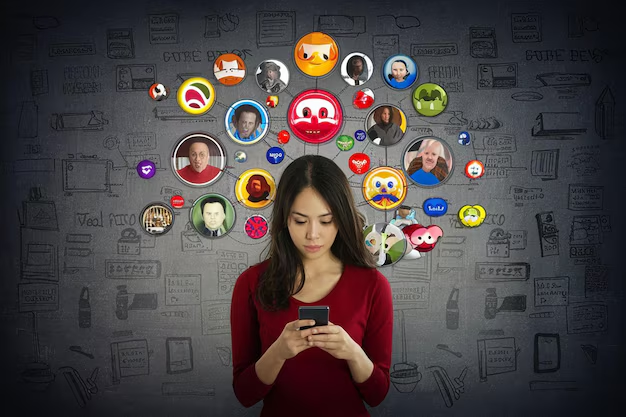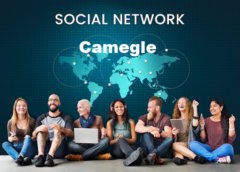In the ever-evolving landscape of digital culture, where new trends, subcultures, and identifiers emerge daily, Dixkidzoz stands out as a peculiar yet fascinating enigma. Unlike corporate slogans or algorithm-driven trends, Dixkidzoz has risen organically from the hidden corners of the internet. It encapsulates youth rebellion, digital creativity, and a resistance to the homogenization of online identities.
This article dives deep into the origins, significance, and future of Dixkidzoz, exploring how it’s shaping online communities, branding strategies, and even the psychology of digital self-expression.
The Birth of Dixkidzoz: A Digital Mystery Unfolds
Dixkidzoz did not emerge from a traditional marketing strategy or celebrity endorsement. Instead, it surfaced around late 2022 in underground forums, anonymous chat rooms, and microblogging platforms. The term gained traction when users began attaching it to digital artworks, cryptic memes, and even experimental coding projects.
The word itself invites multiple interpretations. “Dix” could hint at numeric symbolism, possibly linked to the number ten in French. “Kid” aligns with the youthful spirit dominating internet spaces, while “zoz” remains deliberately abstract—either playful nonsense or a secretive suffix adopted by niche groups.
But perhaps its meaning matters less than its function. Dixkidzoz operates more like a digital badge or performance—an ever-shifting symbol of belonging for those navigating the chaotic intersections of technology and culture.
Dixkidzoz and the Rise of Fluid Digital Identities
Today’s internet users, particularly Gen Z and Gen Alpha, crave identities that are both distinctive and flexible. Dixkidzoz embodies this desire. Unlike subcultures of the past, which came with specific aesthetics like goth or punk, Dixkidzoz defies visual and ideological constraints.
Instead, it thrives on ambiguity, allowing participants to define its meaning through action. Whether it’s contributing ephemeral art, coding self-erasing websites, or participating in anti-corporate flash mobs in virtual spaces, the label Dixkidzoz is earned through engagement, not adoption.
This quality makes it particularly resilient to commercial co-option. Brands struggle to monetize what they cannot define.
Why Dixkidzoz Resonates in Today’s Digital Age
To understand why Dixkidzoz resonates, we must first acknowledge the growing tension between digital individuality and algorithmic conformity. Social media platforms encourage curated personas optimized for likes and shares. Dixkidzoz, however, emerges as a counterpoint—a celebration of anonymity, creativity, and impermanence.
Its adherents often reject traditional markers of success like followers or viral content. Instead, they favor alternative forms of recognition: cryptic memes, underground collaborations, and short-lived digital experiences.
This philosophy reflects a broader generational sentiment: a refusal to let identity become a product.
Table: How Dixkidzoz Differs from Traditional Digital Identities
| Feature | Traditional Digital Identity | Dixkidzoz Approach |
|---|---|---|
| Definition | Clear and consistent branding | Ambiguous and fluid symbolism |
| Goal | Build followers and monetize | Create, perform, and disappear |
| Platforms | Mainstream (Instagram, TikTok) | Fringe (Discord, VR spaces) |
| Aesthetic | Highly curated | Anti-aesthetic, chaotic creativity |
| Permanence | Emphasis on legacy and archives | Ephemeral and self-erasing content |
The Intersection of Art, Code, and Culture
One fascinating aspect of Dixkidzoz is its fusion of artistic expression and coding. Participants often use open-source tools, AI, and blockchain to create projects that resist permanence. A notable example includes a decentralized virtual art gallery where every piece is auto-deleted after 48 hours. This “digital impermanence” critiques the modern obsession with content preservation and online legacies.
Such projects suggest that Dixkidzoz is more than a trend—it’s a movement experimenting with the ethics and possibilities of the digital age.
The Role of Dixkidzoz in Personal Branding and Online Communities
While Dixkidzoz resists mainstream adoption, it still holds lessons for personal branding and digital strategy. In an overcrowded internet, uniqueness is currency. A name like Dixkidzoz, with its invented and stylized composition, offers a memorable and searchable identity.
For creators, streamers, or startups, adopting such abstract names can provide several advantages:
- They stand out in search engine results
- They are easier to trademark due to their originality
- They resonate with audiences tired of formulaic branding
But Dixkidzoz’s real value lies in community building. It fosters micro-communities bonded by shared ambiguity, creating spaces for creativity and experimentation.
Challenges of Embracing Dixkidzoz-Like Identities
While unique identifiers like Dixkidzoz offer distinct advantages, they come with their challenges. Pronunciation and spelling may confuse audiences, especially if the name gains broader recognition. Securing consistent usernames across platforms becomes increasingly difficult as digital spaces grow saturated.
Moreover, as popularity rises, there is always the risk of cultural dilution. The very things that make Dixkidzoz powerful—its fluidity and mystery—may weaken if it is adopted by the mainstream or commercialized.
The Future of Dixkidzoz: Fad or Cultural Marker?
Will Dixkidzoz endure, or is it destined to fade like so many internet phenomena? Its future likely depends on how well it maintains its anti-viral ethos. The current trajectory suggests it could evolve into a lasting symbol of digital resistance—a space for alternative identities and creative experimentation.
As the internet moves further into Web3 and metaverse environments, identifiers like Dixkidzoz may take on new forms, perhaps as avatars, decentralized communities, or AI-driven alter egos. The key will be preserving its grassroots, participatory essence.

Educational Perspectives: Dixkidzoz as Digital Literacy
Interestingly, Dixkidzoz is already finding its way into academic discourse. Professors at progressive art and media schools are using it as a case study in digital theory, exploring its role in anonymity, chaos, and community-driven culture.
By studying Dixkidzoz, students gain insight into critical questions about identity, technology, and the ethics of online existence.
Conclusion
Dixkidzoz represents much more than a cryptic term floating around internet spaces. It encapsulates a generational mindset that prioritizes creativity, resistance, and impermanence in a digital world obsessed with visibility and permanence. Whether as a personal handle, a collective movement, or a cultural critique, Dixkidzoz embodies the messy, unpredictable beauty of internet subcultures.
For some, it may remain a curious blip in digital history. For others, it’s already a lens through which they navigate the complexities of modern online life. Its ultimate fate is unknown, but perhaps that’s precisely the point.
Calamariere: Recipes and Traditions from Italy’s Coast
FAQS
What is the meaning of Dixkidzoz in online culture?
Dixkidzoz does not have a fixed definition. It functions as a flexible digital identifier that reflects experimental creativity and rejection of mainstream digital norms.
Is Dixkidzoz only a social media phenomenon?
While it originated in online spaces, Dixkidzoz extends beyond traditional social media trends. It thrives in decentralized platforms, virtual environments, and fringe digital communities.
Can Dixkidzoz evolve into a commercial brand?
Although its anti-commercial roots resist commodification, there is potential for Dixkidzoz to be developed into a unique brand, provided it stays true to its original ethos.
Who typically uses Dixkidzoz as an identity?
It is mainly adopted by younger generations, artists, coders, and digital rebels who prefer anonymity and creative freedom over algorithmic fame.
Where can someone explore Dixkidzoz-related content?
Dixkidzoz-related content often appears on underground forums, experimental art platforms, decentralized networks, and private digital communities rather than mainstream sites.



